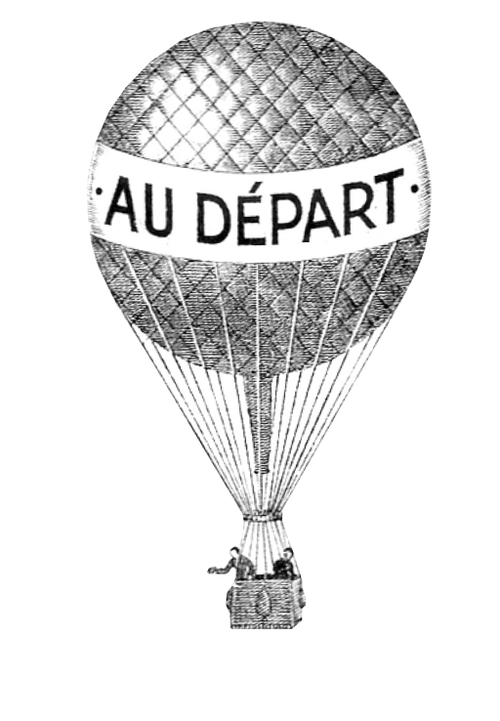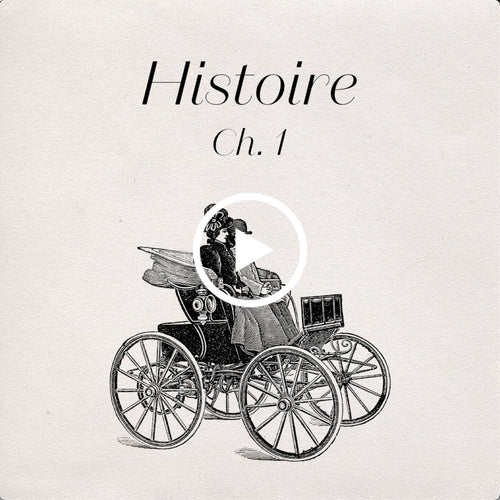The origin of Au Départ was a story of departure and discovery. Founded in Paris in 1834, Au Départ is one of the oldest French malletiers, whose leather trunks and fine travel boxes were coveted by French aristocracy and venerable artists embarking on new adventures. From steamers to railways, Au Départ’s objets de voyage have travelled into tiny villages, and traversed through unknown terrains, where new horizons unfolded before dreamers. Its heritage is synonymous with the most majestic of journeys and the discovery of cultures. All aboard to explore the heritage of Au Départ.
1834
1900
1920
1930
1965

1965
1965

After Monsieur François Bertin passed away, his son Alain took over the direction of the business. In 1965, a strategic decision was made and Au Départ merged with one of its traditional competitors, Moynat. The Au Départ boutique at 29, Avenue de l’Opéra was shut down, and the business traded under the name “Moynat Au Départ” at 1, Avenue de l’Opéra in Paris. The boutique was closed in 1976, the Au Départ label entered into a sleeping mode while their trunks continued to carry dreams and aspirations around the world.
1930
1930

The stores soon became a favourite luggage-maker and the house of Au Départ produced a vast range and number of trunks: postal, rounded, canteen, wicker, flat and wooden. Trunks of all sizes designed for variety of activities to be experienced in luxury and style. The functionality appealed to a diverse range of clients who demanded the highest standards of manufacture. Trunks for both the grandest and smallest of trips with a sense of elegance and modernity. On 12 July 1932, Au Départ joined the four largest trunk-makers of the time (Louis Vuitton, Goyard, Moynat and Aux Etats Unis) to form a firm called Coopération Industrielle & Commerciale (CIC) in order to weather the economic storm following the crisis in 1929.
1920
1920

Business continued to grow thanks to a series of inventions and patents to manufacture trunks and to waterproof materials. Success reached its peak in the 1920s, when Au Départ became synonym with style and luxury. Also, it was in 1920 when Au Départ created the essential case of Antoine de Saint-Exupéry, writer, pioneering aviator and world-famous author of “The Little Prince”, key piece of the Au Départ archive. In 1928 Au Départ was also selected to be featured in the Pan Annuaire du Luxe à Paris.
1900
1900

Designed out of the geometrical form of a parallelepiped inspired by the floors of the ruins of Pompeii, the Au Départ monogram was created. Also, to distinguish themselves from all the other trunk-makers. At the beginning of the century, each one of traditional the French trunk-makers was then easily recognisable by its unique pattern. Nevertheless, and because of the lack of resources of the time, they all had the limitation of colours: the base was back cotton and the only available dyes were white and brown.
1834
1834

Born in an era of great explorations and huge development of rail transport, originally, the brand manufactured exclusively luxury trunks and leather goods. Au Départ literally means “at departure”, and it was thanks to a burst of creativity of its founders that named the company after the location of its first shop opened in 1847 - at 7 Boulevard Denain - right in front of the departures of the newly inaugurated Gare du Nord train station in Paris. In 1871, the Company was taken over by the Bertin brothers, Ernest and Paul: two young gentlemen born in the village of Daulaincourt, who started their business selling haberdashery at the Saint-Quentin market and then expanded their business to bags and baskets. In 1874. The business expanded under the Bertin brother’s stewardship: a second shop was opened at 29, Avenue de l’Opéra in 1874 while the Boulevard Denain store expanded its product offering to include armoury, hunting and fishing equipment in addition to luxury trunks. Years passed by and Au Départ had become well known among royalties and aristocrats.





